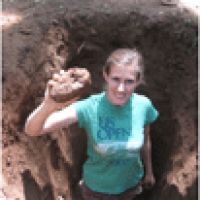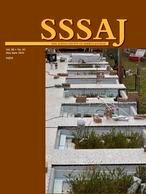Dere et al., 2016
Mineralogical Transformations and Soil Development in Shale across a Latitudinal Climosequence
Dere Ashlee L., Timothy S. White, Richard April, and Susan L. Brantley (2016)
Soil Science Society of America, 80:623–636
-
Shale Hills, INVESTIGATOR, COLLABORATOR
-
National, Shale Hills, INVESTIGATOR, STAFF
-
Shale Hills, INVESTIGATOR, COLLABORATOR
-
National, Eel, Luquillo, Shale Hills, INVESTIGATOR, COLLABORATOR
Abstract
To investigate factors controlling soil formation, we established a climosequence as part of the Susquehanna-Shale Hills Critical Zone Observatory (SSHCZO) in central Pennsylvania, USA. Sites were located on organic matter-poor, iron-rich Silurian-aged shale in Wales, Pennsylvania, Virginia, Tennessee, Alabama, and Puerto Rico, although this last site is underlain by a younger shale. Across the climosequence, mean annual temperature (MAT) increases from 7 to 24°C and mean annual precipitation (MAP) ranges from 100 to 250 cm. Variations in soil characteristics along the climosequence, including depth, morphology, particle-size distribution, geochemistry, and bulk and clay mineralogy, were characterized to investigate the role of climate in controlling mineral transformations and soil formation. Overall, soil horizonation, depth, clay content, and chemical depletion increase with increasing temperature and precipitation, consistent with enhanced soil development and weathering processes in warmer and wetter locations. Secondary minerals are present at higher concentrations at the warmest sites of the climosequence; kaolinite increases from <5% at northern sites in Wales and Pennsylvania to 30% in Puerto Rico. The deepest observed weathering reaction is plagioclase feldspar dissolution followed by the transformation of chlorite and illite to vermiculite and hydroxy-interlayered vermiculite. Plagioclase, although constituting <12% of the initial shale mineralogy, may be the profile initiating reaction that begins shale bedrock transformation to weathered regolith. Weathering of the more abundant chlorite and illite minerals (∼70% of initial mineralogy), however, are more likely controlling regolith thickness. Climate appears to play a central role in driving soil formation and mineral weathering reactions across the climosequence.
Citation
Dere Ashlee L., Timothy S. White, Richard April, and Susan L. Brantley (2016): Mineralogical Transformations and Soil Development in Shale across a Latitudinal Climosequence. Soil Science Society of America, 80:623–636 . DOI: 10.2136/sssaj2015.05.0202
 This Paper/Book acknowledges NSF CZO grant support.
This Paper/Book acknowledges NSF CZO grant support.
Explore Further





